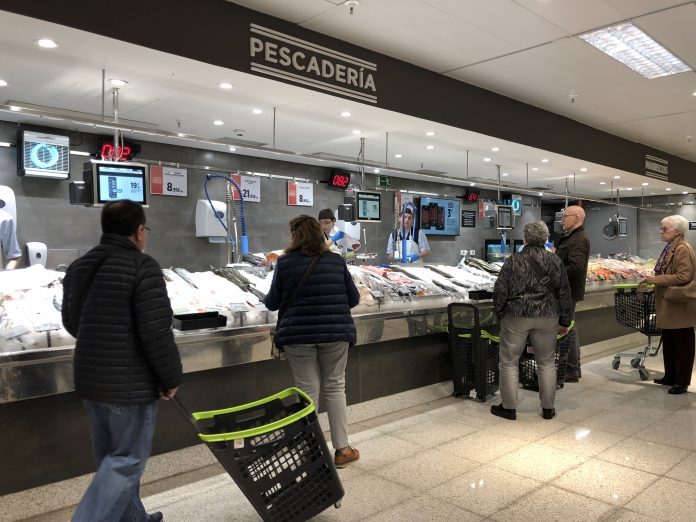Cheaply sold salmon meets slimmed down biomass
“A cuanto esta esa?” asks a woman at the fish counter.
She points to the steadily more selected silvery salmon laid on a bed of ice bits. In the cellar of the supermarket, El Corte Ingles, in the centre of Madrid, a queue of eager fish buyers has formed. On the last shopping day before Easter, that shopping cart has to be full. At the fresh food counter, there’s wide assortment of sea bass, sea bream, haddock and salmon.
Stimulating
Salmon normally has a dominant position in the supermarket seafood section, but here’s there’s bafflingly little of the type. An easy explanation would seem to be the price — extremely slight at EUR 12.95 per kilo for fresh cutlets, which not doubt stimulates the end customer’s demand.

So, salmon has become cheaper and now only nets a minor share of end-customer budgets.
Draw in demand
Salmon has also been priced down from its indexed highs of last year at the “hard-discount” stores of German supermarket giant, Aldi.
Today, skinless, boneless fillets are being offered for EUR 17.79 per kilo, or down EUR 3, or 15 percent, below last year’s top price.
While the focus in Norway has been on the cold winter and commensurate slow fish growth in marine grow-outs, lower supermarket prices have brought on a draw in demand in the salmon market this winter. Together with the China market opening, the unexpected demand growth has caught exporters and brokerages with their pants down.
With their 2018 price tip of EUR 5, the Norwegian Seafood Council’s marketers also appear to have positioned themselves too low.
Read A cold winter is no “black swan”
Biomass
Rising demand this time has been met by markedly slimmer supply. According to fresh biomass stats from the Norwegian Seafood Council’s Akvafakta, some 697,000 tonnes of salmon (in grow-out) were to be found in Norwegian fjords. That’s just three percent more than at the same time in 2017.
A colder sea ensured feed sales were two percent lower than in February last year, although exports volumes are up five percent.

